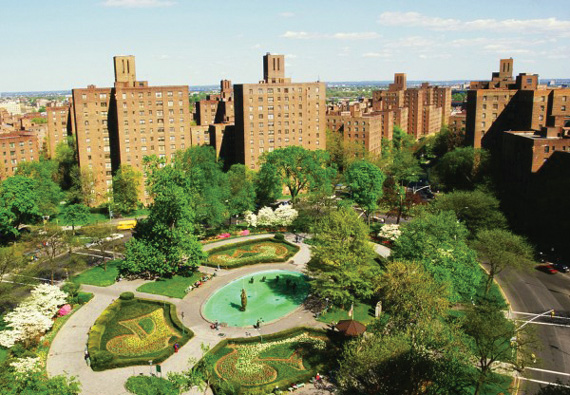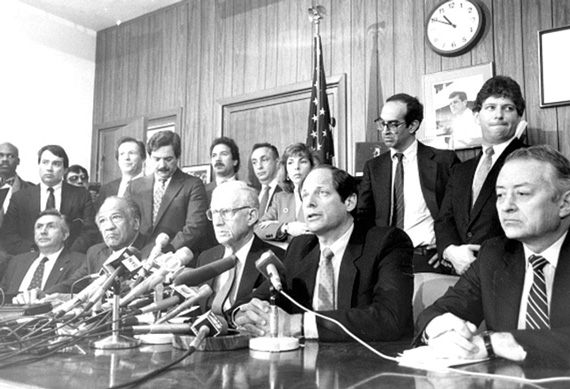Trending
This month in real estate history
The city's first private-public development, architect Louis Skidmore dies, and organized crime exposed in construction industry

1938: Plans Filed for Bronx ‘City Within a City’
The Metropolitan Life Insurance Company filed its plans for the first buildings in a massive Bronx housing complex 78 years ago this month. Parkchester came to include about 50 building “clusters” on a 129-acre site, housing some 40,000 people. It was also the first development built using a private-public model. The “garden” community embodied the avant-garde of urban planning at the time, an example of the towers-in-a-park ideal touted by architects like Le Corbusier and later reproduced at Stuyvesant Town and Peter Cooper Village. Befitting a garden, the existing street grid was ignored and through traffic was limited to two diagonal boulevards. MetLife’s chairman at the time touted it as a “completely balanced community,” which would include “stores, schools, churches, parks, playground,” but he insisted on racial segregation. While MetLife held on to Stuy Town until 2006, it sold Parkchester in 1969. The buyers, a group of investors headed by Harry Helmsley, converted the rental apartments to condos.

Louis Skidmore
1962: Architect Louis Skidmore Dies
Louis Skidmore, a founding partner of architecture firm Skidmore, Owings and Merrill [TRDataCustom], died 54 years ago this month, according to an obituary in the New York Times. He was 65 years old. Skidmore was known for spotting talent as much as for his design vision. “He couldn’t have been nicer to me and the four partners who grew up with him,” said fellow SOM partner Gordon Bunshaft in an interview published in 1990. “Skid was the man who had the insight in finding people.” Structures by SOM include the Chase Manhattan building in New York, now known as 28 Liberty Street, and Lever House, the glass-and-steel structure on Park Avenue that signaled a new era in New York office building construction. After serving in World War I, Skidmore went to the Massachusetts Institute of Technology, then continued his studies in Paris and Rome. He went to work for the 1933-1934 Chicago World’s Fair before co-founding his firm with Nathaniel Owings in 1936. Less than a decade later, the firm was designing large residential complexes as well as the Tennessee town of Oak Ridge, where nuclear scientists would work on the atomic-bomb-making Manhattan Project. Today, SOM is one of the largest architecture firms in the world and continues to design skyscrapers, including the world’s current tallest building, the Burj Khalifa.

Members of New York’s Organized Crime Task Force
1986: Organized Crime Controls Construction Industry, Report Finds
A confidential government report leaked to the New York Times 29 years ago this month found that organized crime organizations were effectively controlling New York City’s construction industry. The state’s Organized Crime Task Force said Mafia figures, in league with corrupt union officials, exerted influence by threatening contractors with slowdowns, union jurisdictional disputes, and the prospect of financial ruin. Although local law enforcement agencies and legislative groups had warned of corruption in the building trades since the 1920s, this was the first time a government agency found ties between high-level players in the city’s multibillion-dollar industry and the Mafia. “Developers, contractors and suppliers… [accept the Mafia as] a necessary evil,” the report was quoted as saying. Organized crime was drawn to the industry because of the huge amounts of money that could be siphoned through extortion, no-show jobs and the plundering of union welfare funds. But by the late 1990s, prosecutions had weakened New York’s five Mafia families and left them in disarray.




